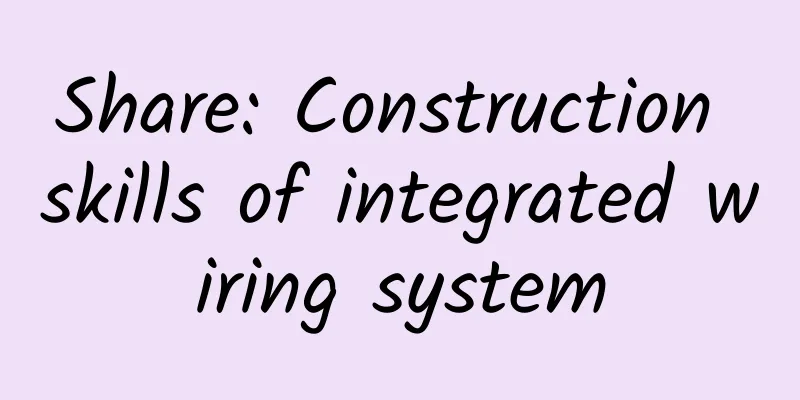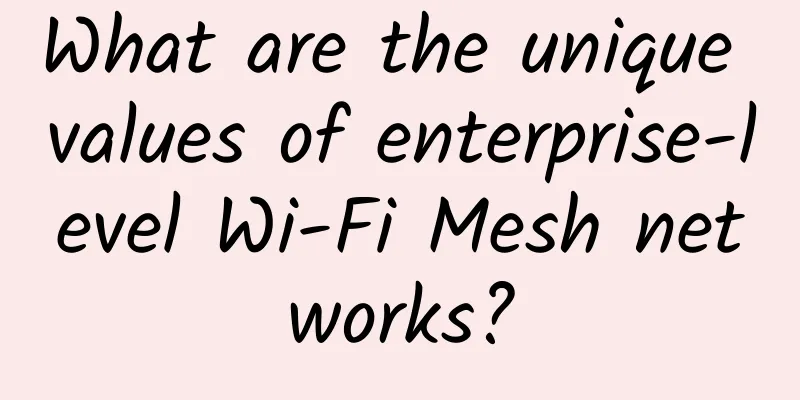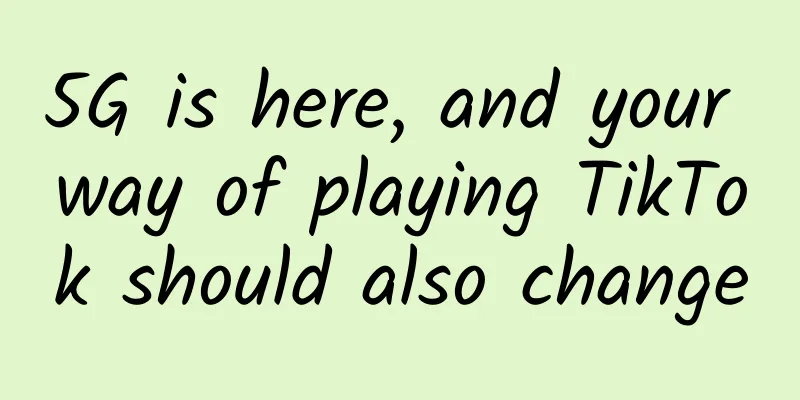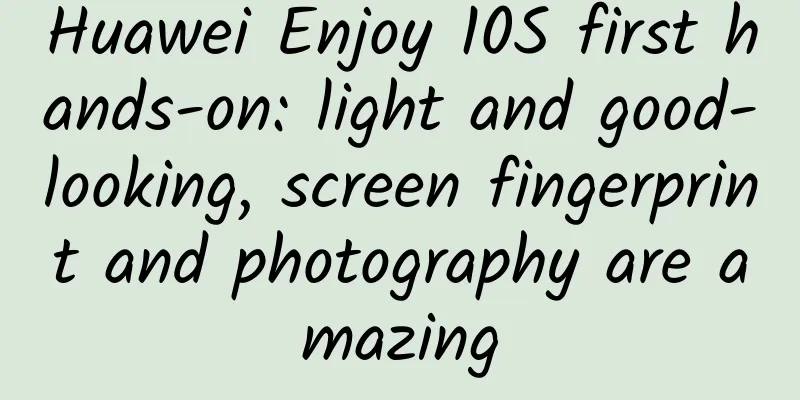What changes does 5G bring to the medical industry?
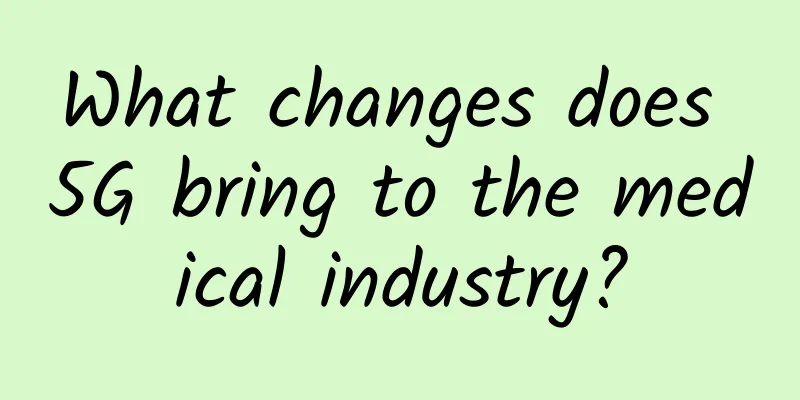
|
Some people say that 2G brought us mobile Internet access, 3G brought us mobile social networking, and 4G brought us live broadcasts and short videos. So what can 5G bring us? 2020 is the year of large-scale construction of 5G, and the arrival of 5G will promote changes in all walks of life. For the medical industry, the distribution of medical resources in various regions of my country is uneven, and the gradual coverage of 5G networks will break the restrictions between regions, allowing patients in remote areas to receive effective treatment in a timely manner, improve diagnosis and medical levels, reduce medical expenses, and reduce the time spent on seeing a doctor. When the medical industry encounters 5G, what application scenarios will be born?
Scenario 1: Remote consultation As a supplement to traditional outpatient services, remote consultation can transcend time and geographical limitations and, to a certain extent, achieve remote allocation of medical resources. In remote areas, medical resources are scarce, difficult cases cannot be effectively diagnosed and treated, and transfer to another hospital will delay the condition. At this time, remote expert consultation can greatly improve the timeliness of diagnosis and treatment. Remote consultation requires real-time video calls, and more importantly, the transmission of large amounts of high-definition medical image data. The clarity of some medical images reaches 4K, which requires very high network speeds. 4G networks are obviously not up to the task. Although wired networks have sufficient speeds, many primary medical institutions cannot afford the cost of a high-speed dedicated line. In some disaster emergency scenarios, wired networks cannot be quickly deployed to temporary hospitals. In both cases, 5G networks have the characteristics of ultra-large bandwidth, which can meet the network speed requirements of remote consultations, and can get rid of the range limitations of wired networks or WiFi, allowing experts to conduct consultations anytime and anywhere. In the front-line treatment of COVID-19, every second counts in the diagnosis and treatment of patients. The rapid deployment of 5G networks has played an important role in remote consultations and has become a bridge connecting lives. Scenario 2: Remote Surgery For areas with underdeveloped medical conditions, remote surgery allows patients to receive high-level surgical treatment from experts without having to transfer to another hospital, which undoubtedly brings hope to many patients. Remote experts control the robotic arm and cooperate with ultra-high-definition medical imaging systems to perform surgical treatment on patients in an immersive way, which requires high-speed and low-latency network support.
Scenario 3: Remote emergency rescue In the scenario of emergency treatment of patients, the time between the time the emergency patient gets on the ambulance and the time he is admitted to the hospital is very precious. However, due to the limitations of the medical equipment on the ambulance, the level of emergency personnel and other conditions, the treatment that can be provided to the patient is relatively limited. If the monitoring conditions in the ambulance can be transmitted back to the hospital in real time and in high definition, and the patient's vital signs data can be sent to the data center for analysis, real-time and accurate sharing of patient information can be achieved. This will help hospital doctors conduct remote consultations and remote guidance, make emergency deployments in advance, and buy precious time for patients. In this scenario, wired network cannot be used, WiFi coverage is limited, and 4G network bandwidth is insufficient. Obviously, 5G is the best choice.
Scenario 4: Remote Training Medical education and training have high requirements for real scenes, and ordinary remote training is difficult to achieve the expected results. In the 5G era, AR/VR's requirements for ultra-large bandwidth and ultra-low latency of wireless networks will be met. At that time, content applications will be stored in the cloud. With 5G, it can break the restrictions of devices and networks on the range of user activities. Therefore, with the help of AR/VR technology, immersive virtual teaching can be achieved, which is more immersive than traditional methods. Scenario 5: Remote Monitoring Patient monitoring is also a major pain point in the traditional medical industry. Currently, many hospitals are generally short of staff for patient monitoring, and monitoring requires high professionalism. Remote monitoring is to use wearable monitoring devices to monitor the patient's condition. It uses a large number of wearable monitoring devices that can access the 5G network, fully utilizes the massive connection characteristics of 5G, and combines big data to conduct real-time monitoring and analysis of the patient's health data, effectively solving the problem of insufficient staff for patient monitoring. In addition, 5G networks can also realize scenarios such as smart medical guidance, mobile medical care, smart campus management, and AI-assisted diagnosis and treatment, effectively improving the level of medical care. It can be foreseen that with the arrival of 5G, not only the medical industry, but all walks of life will usher in changes, and our lifestyle will change with each passing day. |
>>: How do these countries plan their 5G breakthrough amid the COVID-19 crisis?
Recommend
How intermittent-link ribbon fiber revolutionizes the communications industry
Fiber optic technology has revolutionized communi...
Asia's mobile broadband development needs to accelerate 2G network withdrawal
In Ovum's latest World Cellular Information S...
How is LOCVPS? Simple test of LOCVPS Hong Kong Tai Po VPS
Last month, we conducted a simple test on LOCVPS ...
Mobile Edge Computing: The True Future of 5G
The promise of 5G has yet to be fulfilled, but it...
Data Center Strategic Evolution
With the advent of cloud computing, many industry...
Strategy Analytics: 5G continues to grow rapidly despite component shortages
On June 2, according to the latest report release...
India's 5G spectrum auction is imminent, but telecom operators are not responding
According to India's Economic Times, the Indi...
The beauty of 5G phone is like being in your ear
[[352290]] This article is reprinted from the WeC...
Let 5G play a role earlier and make 5G technology 4G
The popularity and application of 4G has opened t...
Here is everything you want to know about 5G progress and next steps
The progress of 5G has always been a key topic of...
Broadband speed-up guide: It is difficult to experience a free 200M broadband speed-up
As early as the World Telecommunication Day event...
Top 7 web scraping tools for 2019
The Internet is constantly flooded with new infor...
Megalayer: Hybrid cloud servers/high-defense servers up to 60% off, Hong Kong dedicated servers from 399 yuan/month, VPS up to 50% off
Megalayer released a promotional plan for March, ...
That's it? This is the SD-WAN you always mentioned to me?
What is SD-WAN? SD-WAN is a software-defined appr...
Wi-Fi7 is here, should the access method of smart home appliances be unified?
In recent years, Wi-Fi specifications have been i...
